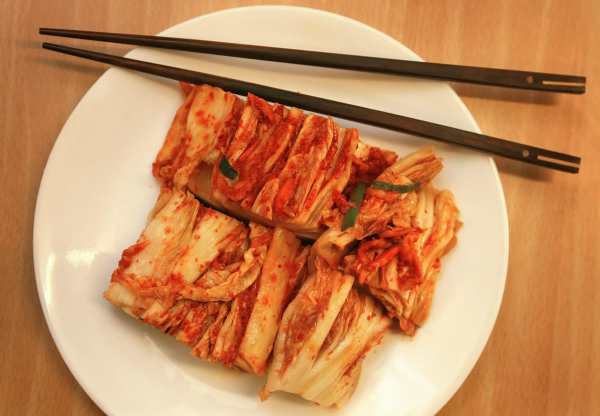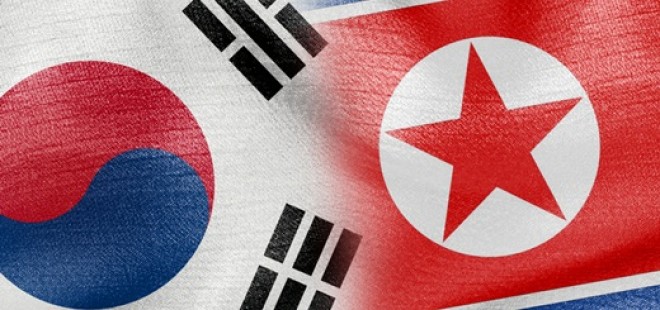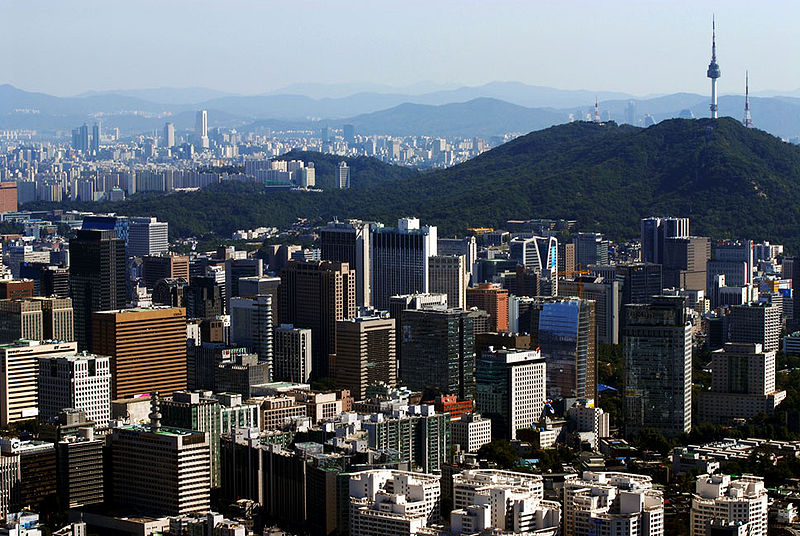IMO: Korea’s national delicacy/obsession, kimchi, is under threat. I fear all hell will break loose in South Korea if the prices continue to rise.
As reported by Mark McDonald,
Excerpt…
Kimchi has become so expensive that some restaurants in the capital no longer offer it free as a banchan, or side dish, a situation akin to having an American burger joint charge for ketchup, although decidedly more calamitous here. The politics editor of a major South Korean newspaper called the kimchi situation “a national tragedy,” and an editorial in Dong-a Ilbo termed it “a once in a century crisis.”
Wholesalers and economists have blamed overly rainy weather for the cabbage shortage, as well as fewer acres having been planted after a bumper crop and low prices in 2009. The average price for a head of Napa cabbage last year was $1.40, according to food industry figures.
The opposition Democratic Party also has laid blame for the shortages on a large river-reclamation project, saying it destroyed farmland that would have been used for cabbages and other vegetables, a charge the government has denied.
Meanwhile, there have been reports of cabbage rustling in rural areas, and the government has suspended tariffs on imported cabbage and radishes from China, beginning Thursday. The president of South Korea, Lee Myung-bak, has said that until the crisis eases he will eat only the cheap and inferior kind of cabbage — the round-headed variety commonly found in Europe and the United States.
“There is no reason for regular folks to have to buy items integral to daily life at higher prices than international prices,” Mr. Lee said at a cabinet meeting on Tuesday, while instructing his economists to more closely monitor commodity prices that have sent the South Korean consumer price index to a 17-month high.
The price increases have caused many middle- and lower-income homemakers to cancel the making of kimchi at home this year, a traditional rite of autumn that typically brings together mothers, daughters, aunts, grannies and neighbors. Some families can go through a couple of hundred heads of cabbage, and it’s not unusual for all the bathtubs and sinks in a house to be filled with bobbing cabbages as they are washed, soaked and brined.
“I’m probably not going to do it at home this year,” said Roh Eun-ja, a Seoul restaurant owner. “Even if the price of cabbage comes down and I do make kimchi, I’ll be downsizing. Not so much this year.”
Mrs. Roh has two daughters, both in their 30s, and she said they learned to make kimchi “by looking over my shoulder, by tasting and doing, like all Korean girls are supposed to.”
One daughter works at an Outback steakhouse, the other at an upscale department store, and they have little time to make kimchi on their own, Mrs. Roh said, lamenting the loss of another tradition to the “ppali ppali” or “hurry hurry” lifestyle of modern South Korea.
“It’s also more expensive to make it on your own,” Mrs. Roh said, “so more and more people buy it ready-made now. That’s what my daughters do.”
Supermarkets have reportedly had difficulty keeping packaged kimchi in stock. A pouch of the popular Chongga Jip brand, made solely from Korean ingredients, sold this week for $4.05 a pound — about half the price of homemade.
Some Koreans are taking the kimchi crisis in stride, saying it is a blip in the market. At her food stall in the sprawling Mo Rae Ne market in western Seoul, Lee Young-ae still serves free kimchi to the vendors and laborers who come by for a $5 plate of roasted pig cheeks, blood sausage and her famous soondae soup.
“The prices will go down,” she said. “Sometimes they’re high, sometimes they’re low. Easy come, easy go. That’s life.”
The making of kimchi is more art than science, more a craft than a repeatable recipe. There are hundreds of variations, with varying ingredients, colorations, textures and levels of heat. As well as a condiment, kimchi is eaten in Korea as a main dish, in soups, stews or with fried rice. There are kimchi burgers, kimchi bacon rolls and kimchi pizza.
“Even if it’s pickled and fermented, if it’s your national dish and you’re in Asia, believe me, they’ll find a way to make it special,” said the celebrity chef Bobby Chinn, the host of World Café Asia, a travel and cooking television show. “For Asians it’s a popular alternative to salads.”
The cabbages are not usually shredded or dismembered, and the salted leaves are slathered with spices, sauces and pastes. The intact cabbages are then placed in earthenware jars and buried in the ground. (Apartment dwellers and urbanites now use stainless steel containers or special kimchi refrigerators.) The cabbages then pickle and ferment into the eye-watering dish served year-round in Korea, at breakfast, lunch and dinner.
Most Koreans see kimchi as a staple food, even a daily necessity, a kind of health food. During the SARS panic in Asia in 2003, the rumor spread widely that kimchi was an effective antidote.
For most Westerners, however, kimchi remains an unacquired taste. It can offend not only with its taste but also with its odor, which can linger on a person for hours. And for those unused to its fire and fury, even a small dish of kimchi can appear less as a delicacy than as a kind of incendiary device.
“To a Western palate, with all the other options out there, kimchi won’t rank very high,” Mr. Chinn said.
A gathering was held in Seoul last week to promote Korean food, with European master chefs coming in for panels and demonstrations. Michel Troisgros, the renowned French chef from Roanne, listened to a Korean official hold forth on the wonders of fermentation and an ambitious project to export Korean foods like kimchi.
“I think you have to stop talking about fermentation,” Mr. Troisgros told the man. “It’s not sexy.”



